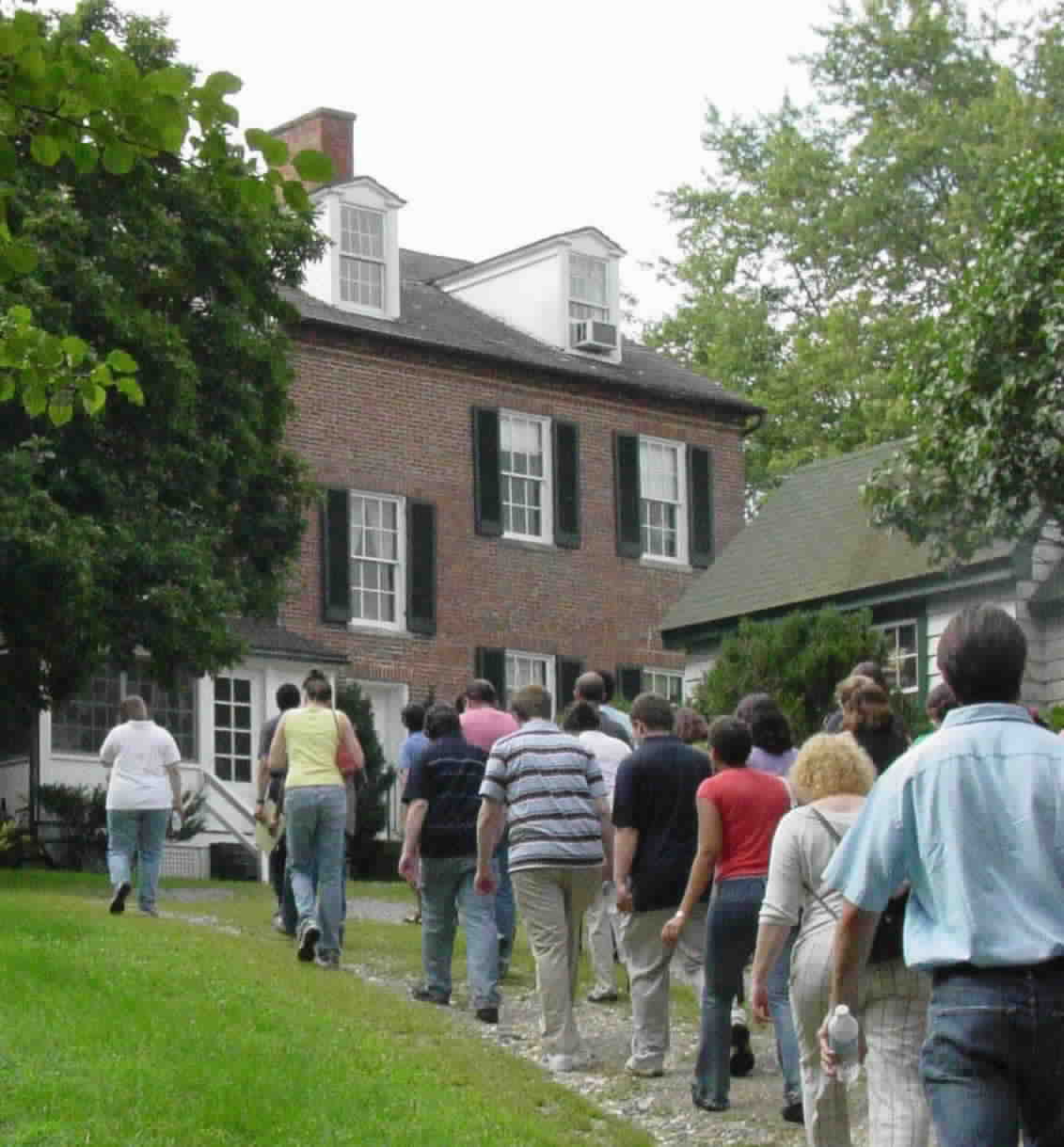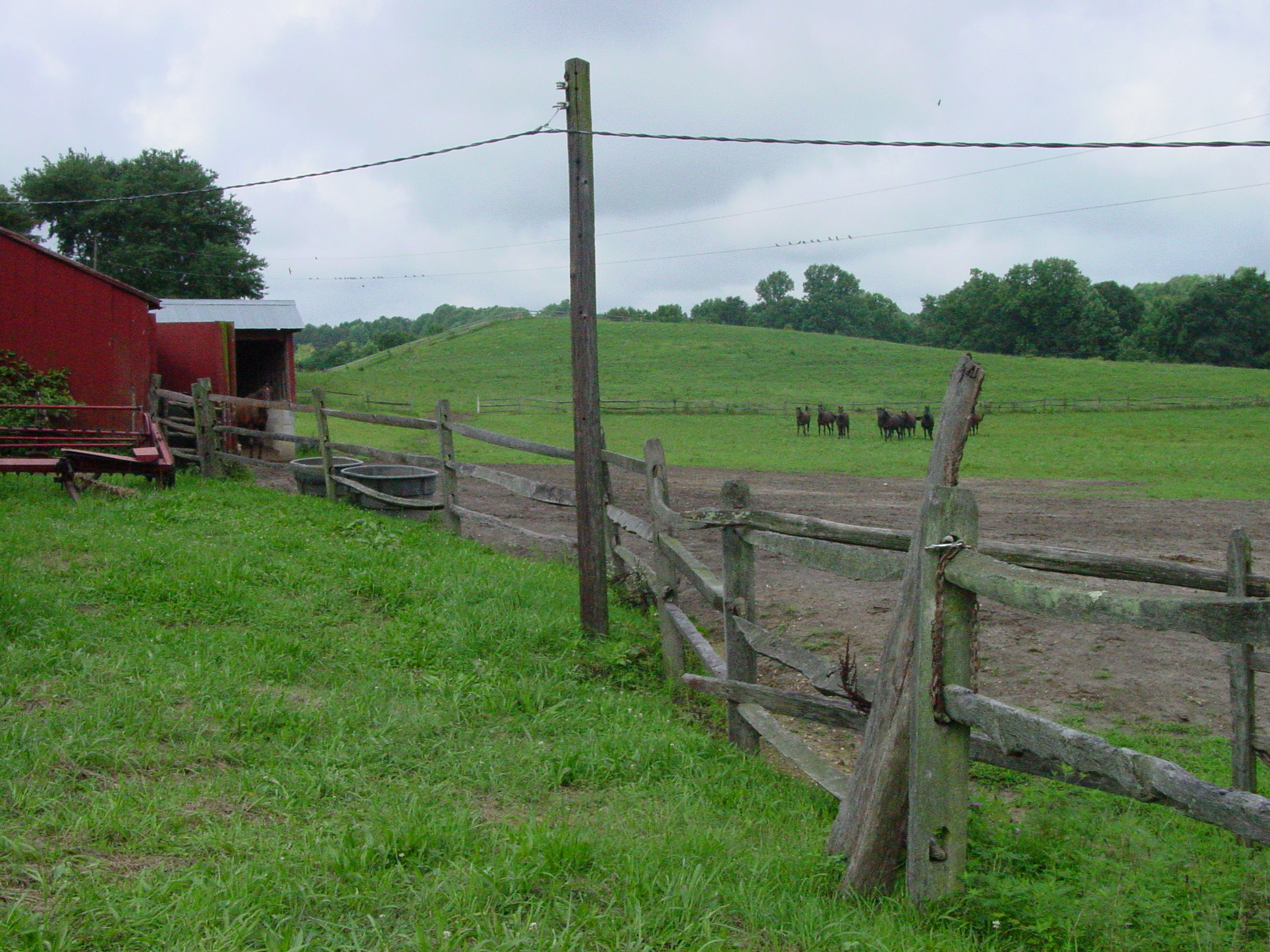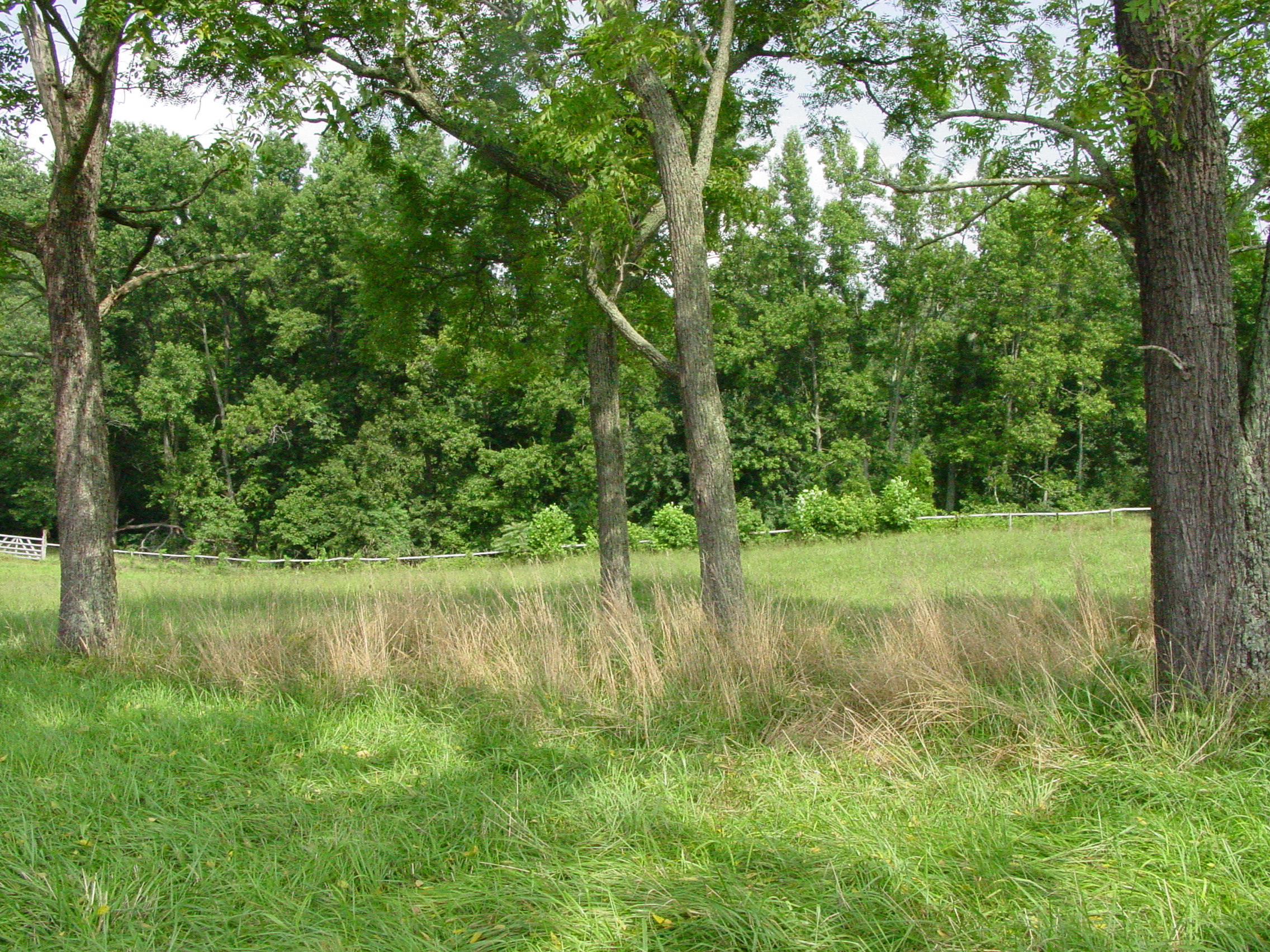Case Studies
Roedown Plantation and the Christiana Resistance
Anne Arundel County, MD
By: John Gartrell
Roedown plantation, located in the Davidsonville, MD is home to an annual steeplechase that brings over 5,000 spectators to take part in Maryland’s rich history of horse racing. Although the event’s history dates over thirty years, the Maryland State Archives’ Summer Intern Class of 2004 visited Roedown plantation with an interest in the property’s antebellum and slaveholding roots. On August 2, 2004, Roedown’s present owners, Mrs. Jeanne Clagett and her husband Hal, opened their home to the Archives and gave our group a unique look at one of Maryland’s historic plantations.

During the eighteenth and nineteenth centuries, Major William Brogden, once a soldier in the American Revolution, owned Roedown. Horse breeding, and farming of tobacco, wheat and grains were some of tasks of the land, and Brogden, like many large land holders of his time, used slave labor to attend to the duties of the plantation. 1 At the time of his death in 1824, property inventories indicate Brogden owned upwards of eighty slaves. History has shown us that one of those slaves would go on to leave an imprint on the story of slavery in Maryland and the United States. The 1825 inventory lists this slave as one of the three children of Louisa but we have come to know his name as William Parker. 2
Born in 1822 on Roedown, William Parker was the original property of Maj. Brogden, but after Brodgen’s death, he became the property of Brogden’s son, David (Mack) Brogden. Parker and his brother Charles fled from Roedown in 1839, running first to Baltimore City, then on to York, Columbia, and Christiana, Pennsylvania. Parker notes a number of reasons for running away in his autobiography, published in two parts of the Atlantic Monthly in 1866, but most prevalent among them, was the fear of being sold by “Master Mack.”3
Parker’s life as a fugitive and freeman living in Pennsylvania was as interesting as his life in Maryland. Unlike most fugitives who tried to fade into anonymity upon reaching their destinations in the north, Parker became well known among the free blacks, some fugitives like himself, and whites in the Christiana community. Parker noticed the inherent danger to fugitives in Pennsylvania when slave catchers came across the Maryland border to return men, women, and children to their owners. He soon initiated a group of blacks whose mission was to prohibit the return of blacks from their community into slavery, by any means, even if it meant violent conflict. In his autobiography he detailed more than a few occurrences when he and his band of associates interceded to prevent slave catchers from succeeding in their jobs.4 On the morning of September 11, 1851 Parker and his cohorts participated in an altercation that grabbed national news headlines, but is relatively unknown by today’s standards. The Christiana Resistance, or Revolt, depending on one’s perspective, is a compelling story of Maryland’s fugitive slaves beneath the underground and the delicate line between slavery in Maryland and freedom just over the border in Pennsylvania.
Christiana Resistance
In 1849, four slaves suspected of stealing wheat from Marylander Edward Gorsuch: George and Joshua Hammond, Nelson Ford, and Noah Buley; along with a freeman, Abraham Johnston, ran away from Gorsuch’s Baltimore County plantation in fear of the wrath of their master. Edward Gorsuch was a member of a long line of Marylanders dating back to the colony’s early settlements. Gorsuch himself was affluent and well known among the elite members of Maryland society. Gorsuch used his connections and petitioned the governor of Maryland to ask the governor of Pennsylvania that his four slaves and the freeman be extradited back to Maryland to face penalty for the lost wheat.5 His requests went unanswered for two years, until he received notice that his four slaves had settled in Lancaster County Pennsylvania, around the area of Christiana. Empowered by the Fugitive Slave Law of 1850, an act that “provided for the appointment of special federal commissioners to facilitate the reclaiming of runaways,” Gorsuch corresponded with US Marshal Henry Kline to assist with the recapture of his slaves. 6 Gorsuch also gathered a posse of five of his associates to accompany him to Christiana: his son, Dickinson Gorsuch; his nephew, Dr. Thomas Pearce; his cousin, Joshua M. Gorsuch; and his neighbors, Nathan Nelson and Nicholas Hutchings.7 The men arrived in Christiana on September 10, 1851.
Gorsuch, Kline, and the five men of the party decided that they should retrieve the slaves around dawn, so they would not be spotted at mid-day. While walking through the countryside, Gorsuch saw one of his fugitives, alias Joshua Kite, leaving the house of William Parker on his way to work. Kite, whose original identity is lost in the record, recognized his former master, turned, and ran back into the Parker home. Kite alarmed the house, “O William! Kidnappers! Kidnappers!” and ran upstairs, where another one of Gorsuch’s slaves, alias Samuel Thompson (whose original name is also a mystery), was sleeping for the night.8 Parker, who in similar situations, stood defiantly in the face of both legal and illegal slave catchers, was determined to defend his home and the lives of the fugitives inside. A verbal showdown took place between Gorsuch and Parker which lasted through the morning. Many times the parties of Gorsuch and Parker urged them to give up their objectives, but it became obvious to the two sides that a violent conflict would erupt before either man backed down. The day became increasingly dangerous for Gorsuch and his party when word spread that Parker’s home was under siege and his “organization” rushed to the scene to lend any help they could; interestingly, another one of Gorsuch’s fugitives, Noah Buley, joined the cavalry.9In the mid-morning, violence broke out between the two sides. At this point, some of Gorsuch’s party had already retreated, leaving Edward, Dickinson, and Joshua Gorsuch along with Thomas Pearce to fight an out-manned battle. When the dust cleared, Pearce, Dickinson and Joshua Gorsuch received major injuries, but Edward Gorsuch met his end. The coroner’s report said that the death was caused by a single shot, but he received many blows in the fray, including a few from the hands of his former slave, Samuel Thompson. 10
The Maryland reaction to the events in Christiana was naturally one of outrage. Governor Louis E. Lowe called for federal intervention in the pursuit and trial of all the participants in the revolt. Lowe stated that, “I do not know of a single incident that has occurred since the passage of the Compromise [of 1850] which tends more to weaken the bonds of union.” Dozens of men left Maryland to track down the murderers and bring them to justice, however, another former Marylander, Frederick Douglass, had a different spin on the day. An 1851 editorial in Douglass’ Paper gave Douglass’ tongue- in-cheek reaction:
Didn’t they know that their legs, arms, eyes, hands, and heads, were the rightful property of the white men who claimed them?
…Oh! Ye naughty and rebellious fellows! Why stand ye up like men, after this might decree?11
Suddenly, Christiana became an issue to speak out for and against slavery. Many saw the event as one that would ultimately turn the south against the north, as governor Lowe said, the events, “will penetrate the soul of the South. They will silence the confident promise of the Union men and give force to the appeals of the Secessionists.”12 Parker and his family were able to escape north to Canada, with some assistance from Douglass. Other alleged offenders were rounded up and charged with treason against the United States. The offenders, both white and black men were eventually acquitted in the largest treason trial in this country’s history.
When looking at Christiana, it is easy to extract the role of Maryland and its slave history from the resistance. On one hand, there is the tale of Edward Gorsuch, who searched two years for his fugitives to return them to an enslaved status. The pursuit could be perceived as one of pride as much as one of principle, nonetheless, Gorsuch used every extent of his constitutional rights to retrieve his property, and was within those rights when he arrived at the house of William Parker on that faithful morning. On the other hand, there is the story of William Parker, and the Gorsuch fugitives. Unlike a Nat Turner or Gabriel Prosser, these men had already made the journey from slavery to freedom, and on many levels were enjoying the fruits of freedom. But their lives as fugitives put them in constant danger, a danger that became all too real when Edward Gorsuch came looking for his slaves on September 11. In the end, these characters, all from the state of Maryland, were willing to die for what they believed was their rights as men. Only one of them ended up paying the ultimate price.
Back To Roedown, 2004
 It was Parker’s story that brought the Maryland State Archives’ Intern class of 2004 to Roedown Plantation. The trip allowed the group a first hand opportunity to see a property that remained very much intact from its antebellum days. Although there weren’t any obvious remains of an African American slave presence, like a slave cabin or antebellum harvesting tools, the opportunity to see Roedown’s expansive rolling hills provided visual evidence of the landscape where slaves once labored that most textbooks could never capture. This was the land William Parker fled from at the young age of seventeen, disgusted with living as a slave and terrified of being sold further south like so many other slaves owned by the Brogden family.
It was Parker’s story that brought the Maryland State Archives’ Intern class of 2004 to Roedown Plantation. The trip allowed the group a first hand opportunity to see a property that remained very much intact from its antebellum days. Although there weren’t any obvious remains of an African American slave presence, like a slave cabin or antebellum harvesting tools, the opportunity to see Roedown’s expansive rolling hills provided visual evidence of the landscape where slaves once labored that most textbooks could never capture. This was the land William Parker fled from at the young age of seventeen, disgusted with living as a slave and terrified of being sold further south like so many other slaves owned by the Brogden family.
If there was one thing on the property that may have a direct relation to the slaves of Roedown, it would be a group of five or six trees visible in the pastures from the very top of the hill where the main house stands. These trees, (see picture below) standing tall in the middle of the fields may have been a site where slaves buried their loved ones. The trees stood out simply because there was a significant area of flat land surrounding them. Our group was able to walk over to the trees. Unfortunately, there were no headstones in the area, but there was noticeable unevenness and indentations in the ground. Although it would take a major excavation effort to prove whether the area was indeed a slave burial ground, it was one of the interesting things the group encountered while visiting.

In closing, the Maryland State Archives would like to thank Roedown’s owners Jeanne and Hal Clagett for allowing us to view this historic property. The trip in and of itself represented the ever- changing way one approaches the study of the Underground Railroad. Today, Roedown is not only recognized for its historic place in Maryland’s horse racing history, or the family history of white owners, but also for being the birthplace of William Parker. Increasingly, scholars are becoming interested in where fugitives began their journey from slavery. In that light, William Parker and Roedown will always be intertwined in Maryland’s story of the flight to freedom.
Notes
Jeanne Begg Clagett; Horsewoman, "Doyenne of Washington Real Estate"
Top of page
